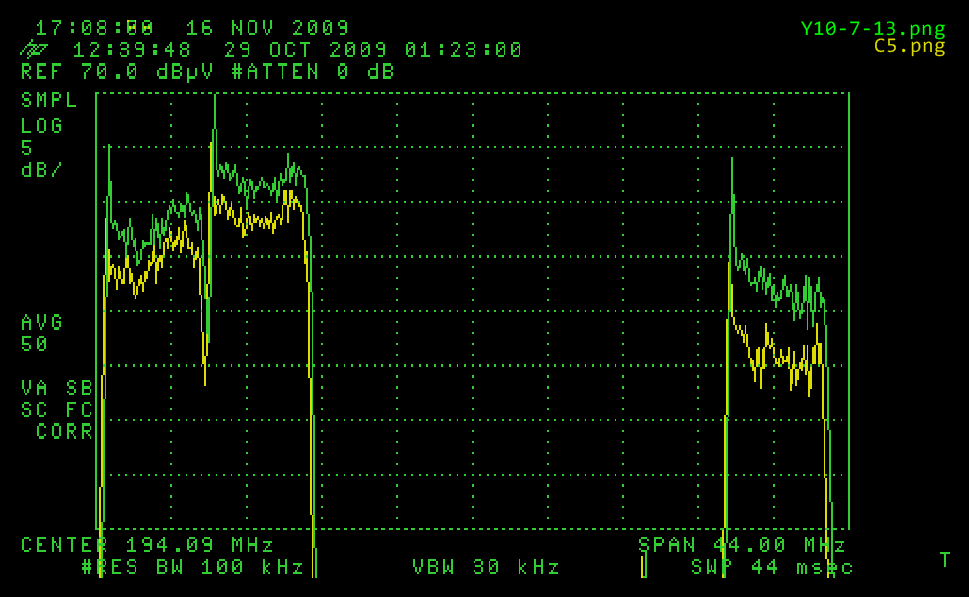Antenna Craft Y10-7-13 versus Antennas Direct C5 |
This is a comparison of the well excepted Y10-7-13 Yagi VHF antenna to the new and unique VHF offering from Antennas Direct called the C5.
| Y10-7-13 | C5 |
 |
 |
On one hand it may seem a little unfair to be pitting the 10 element Yagi desisgn of the Y10-7-13 against the loop design represented by the C5. However, the C5's form factor and aesthetics are novel, and establishing its sensitivity relative to the Y10-7-13 comes
Channels 7, 8, and 13:

Conclusions
At the low end the Y10-7-13 is about 3 dB more sensitive than the C5, and at the high end about 6 to 7 dB.
From a sensitivity perspective these two antennas are not intended to be regarded in the same class. The Y10-7-13 has been for some time one of the highest gain VHF antennas on the US market without resorting to big $$$ and/or importing. Its gain ranges from about 10 dB to 12 dB. On the other hand the published specs for the C5 are in the range of 6.5 to 7.5 dB, and the C5's sensitivity is therefore, by design, about 1/4 the sensitivity of the Y10-7-13.
It should be pointed out that the signals being received at the test location are subject to difraction (knife edge effect). In between the receiving location at about 6500 feet is a mountain ridge at about 10,000 feet, with the transmitting towers on the other side of the ridge at about 8500 feet. Nevertheless, the "flatness" of the signals (absence/presence of significant comb filtering effects) is comparable for both designs.
It should be kept in mind that for DTV's ATSC modulation, a flat response across a given channel is most often just as critical a contributor to quality, if not moreso, than amplitude. The signals at the test location from these two antennas produced nearly equal digital "quality". The Channel 13 signal was just a few points off from the Y10-7-13. [The slight pertebation in the C5's Ch 13 signal (versus the Y10-7-13) could be corrected with a slight relocation].
What is novel about the C5 are its aesthetics. Its low profile design is a revolution in VHF rooftop gaudiness; not much more of a profile than a common satellite antenna.
For really deep fringe area scenarios the Y10-7-13 will most likely serve better. But for 70-90% of the urban and suburban market areas, the C5 could serve quite well, and much less obtrusively.
It was light, and easily assembled.